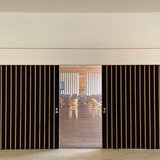За свою вековую историю консольный стул претерпел множество трансформаций, а уж его вариации с подлокотниками и подавно. Каких только решений не придумывали дизайнеры, чтобы подлокотники выглядели органичным и изящным продолжением консольной конструкции (в качестве аперитива загляните в комментарии - там вас ждет несколько наиболее известных и примечательных моделей). Особенно в этом преуспел выдающийся чешский дизайнер Йиндржих Халабала, известный многим по легендарному креслу H-269. В 1930-х гг., будучи главным дизайнером мебельной фабрики «UP Závody» в Брно, он вдохновился работами Марта Стама и Марселя Брейера и другими предметами из стальных трубок, проникшими в мебельный дизайн благодаря Баухаусу, и представил несколько собственных вариантов консольного стула, в том числе двойной консольный (!).
Подлокотники в моделях Халабалы выполняют важную конструктивную задачу: сворачивая стальные трубы в бараний рог, дизайнер таким образом отказывался от традиционных для консольного стула передних ножек. Вот как он объяснял свой подход: «Ранние модели обеспечивали амортизацию сиденья только в задней части стула. Конструкция моих кресел такова, что и передняя, и задняя половины сиденья имеют одинаковые амортизационные свойства, а сидящий не испытывает ощущения, что он вот-вот упадет, характерного для прежних моделей, у которых пружинила только задняя часть сиденья».
———
The history of the cantilevered chair, which spans over a hundred years, has seen lots of twists and turns some of which revolved around the armrests. There were countless examples of different designs that aimed to integrate armrests into a cantilever structure in an organic and elegant way – take a look at just a handful of such chairs that we find especially noteworthy and are posting in the comments below. A remarkable breakthrough came thanks to Jindrich Halabala, a celebrated Czech designer most of you know because of the iconic H-269 chair. In the 1930s, Halabala was the head of design at UP Závody, a leading Czech furniture-maker in Brno. Inspired by the works of Mart Stam and Marcel Breuer as well as other tubular steel products commonly associated with Bauhaus, he came up with a few cantilevered chair designs of his own, including a double-cantilever chair.
As a rule, armrests in Halabala’s chairs were structural as much as functional. Bending tubular steel into coils and single curved lines, Halabala was able to get rid of the front legs altogether. Here’s how he explained his rationale behind these intricate designs, “In the earlier models, the flexibility was one-sided. With these chairs, the design is chosen so that the chairs have the same range of backward and forward flexibility. This avoids the falling sensation that one felt with backward springing chairs.”
(photos: nanovo.cz, praguedesignicons.com, galeriefunkce.cz, zeitflair.de, architonic.com, lot-art.com, iretro.cz, Dibe via Wiki Commons, vinterior.co, morentz.com, moma.org, Dzen user Oh my. Nova)
Подлокотники в моделях Халабалы выполняют важную конструктивную задачу: сворачивая стальные трубы в бараний рог, дизайнер таким образом отказывался от традиционных для консольного стула передних ножек. Вот как он объяснял свой подход: «Ранние модели обеспечивали амортизацию сиденья только в задней части стула. Конструкция моих кресел такова, что и передняя, и задняя половины сиденья имеют одинаковые амортизационные свойства, а сидящий не испытывает ощущения, что он вот-вот упадет, характерного для прежних моделей, у которых пружинила только задняя часть сиденья».
———
The history of the cantilevered chair, which spans over a hundred years, has seen lots of twists and turns some of which revolved around the armrests. There were countless examples of different designs that aimed to integrate armrests into a cantilever structure in an organic and elegant way – take a look at just a handful of such chairs that we find especially noteworthy and are posting in the comments below. A remarkable breakthrough came thanks to Jindrich Halabala, a celebrated Czech designer most of you know because of the iconic H-269 chair. In the 1930s, Halabala was the head of design at UP Závody, a leading Czech furniture-maker in Brno. Inspired by the works of Mart Stam and Marcel Breuer as well as other tubular steel products commonly associated with Bauhaus, he came up with a few cantilevered chair designs of his own, including a double-cantilever chair.
As a rule, armrests in Halabala’s chairs were structural as much as functional. Bending tubular steel into coils and single curved lines, Halabala was able to get rid of the front legs altogether. Here’s how he explained his rationale behind these intricate designs, “In the earlier models, the flexibility was one-sided. With these chairs, the design is chosen so that the chairs have the same range of backward and forward flexibility. This avoids the falling sensation that one felt with backward springing chairs.”
(photos: nanovo.cz, praguedesignicons.com, galeriefunkce.cz, zeitflair.de, architonic.com, lot-art.com, iretro.cz, Dibe via Wiki Commons, vinterior.co, morentz.com, moma.org, Dzen user Oh my. Nova)
3❤40👍15🔥5
group-telegram.com/midcenturymodern/17246
Create:
Last Update:
Last Update:
За свою вековую историю консольный стул претерпел множество трансформаций, а уж его вариации с подлокотниками и подавно. Каких только решений не придумывали дизайнеры, чтобы подлокотники выглядели органичным и изящным продолжением консольной конструкции (в качестве аперитива загляните в комментарии - там вас ждет несколько наиболее известных и примечательных моделей). Особенно в этом преуспел выдающийся чешский дизайнер Йиндржих Халабала, известный многим по легендарному креслу H-269. В 1930-х гг., будучи главным дизайнером мебельной фабрики «UP Závody» в Брно, он вдохновился работами Марта Стама и Марселя Брейера и другими предметами из стальных трубок, проникшими в мебельный дизайн благодаря Баухаусу, и представил несколько собственных вариантов консольного стула, в том числе двойной консольный (!).
Подлокотники в моделях Халабалы выполняют важную конструктивную задачу: сворачивая стальные трубы в бараний рог, дизайнер таким образом отказывался от традиционных для консольного стула передних ножек. Вот как он объяснял свой подход: «Ранние модели обеспечивали амортизацию сиденья только в задней части стула. Конструкция моих кресел такова, что и передняя, и задняя половины сиденья имеют одинаковые амортизационные свойства, а сидящий не испытывает ощущения, что он вот-вот упадет, характерного для прежних моделей, у которых пружинила только задняя часть сиденья».
———
The history of the cantilevered chair, which spans over a hundred years, has seen lots of twists and turns some of which revolved around the armrests. There were countless examples of different designs that aimed to integrate armrests into a cantilever structure in an organic and elegant way – take a look at just a handful of such chairs that we find especially noteworthy and are posting in the comments below. A remarkable breakthrough came thanks to Jindrich Halabala, a celebrated Czech designer most of you know because of the iconic H-269 chair. In the 1930s, Halabala was the head of design at UP Závody, a leading Czech furniture-maker in Brno. Inspired by the works of Mart Stam and Marcel Breuer as well as other tubular steel products commonly associated with Bauhaus, he came up with a few cantilevered chair designs of his own, including a double-cantilever chair.
As a rule, armrests in Halabala’s chairs were structural as much as functional. Bending tubular steel into coils and single curved lines, Halabala was able to get rid of the front legs altogether. Here’s how he explained his rationale behind these intricate designs, “In the earlier models, the flexibility was one-sided. With these chairs, the design is chosen so that the chairs have the same range of backward and forward flexibility. This avoids the falling sensation that one felt with backward springing chairs.”
(photos: nanovo.cz, praguedesignicons.com, galeriefunkce.cz, zeitflair.de, architonic.com, lot-art.com, iretro.cz, Dibe via Wiki Commons, vinterior.co, morentz.com, moma.org, Dzen user Oh my. Nova)
Подлокотники в моделях Халабалы выполняют важную конструктивную задачу: сворачивая стальные трубы в бараний рог, дизайнер таким образом отказывался от традиционных для консольного стула передних ножек. Вот как он объяснял свой подход: «Ранние модели обеспечивали амортизацию сиденья только в задней части стула. Конструкция моих кресел такова, что и передняя, и задняя половины сиденья имеют одинаковые амортизационные свойства, а сидящий не испытывает ощущения, что он вот-вот упадет, характерного для прежних моделей, у которых пружинила только задняя часть сиденья».
———
The history of the cantilevered chair, which spans over a hundred years, has seen lots of twists and turns some of which revolved around the armrests. There were countless examples of different designs that aimed to integrate armrests into a cantilever structure in an organic and elegant way – take a look at just a handful of such chairs that we find especially noteworthy and are posting in the comments below. A remarkable breakthrough came thanks to Jindrich Halabala, a celebrated Czech designer most of you know because of the iconic H-269 chair. In the 1930s, Halabala was the head of design at UP Závody, a leading Czech furniture-maker in Brno. Inspired by the works of Mart Stam and Marcel Breuer as well as other tubular steel products commonly associated with Bauhaus, he came up with a few cantilevered chair designs of his own, including a double-cantilever chair.
As a rule, armrests in Halabala’s chairs were structural as much as functional. Bending tubular steel into coils and single curved lines, Halabala was able to get rid of the front legs altogether. Here’s how he explained his rationale behind these intricate designs, “In the earlier models, the flexibility was one-sided. With these chairs, the design is chosen so that the chairs have the same range of backward and forward flexibility. This avoids the falling sensation that one felt with backward springing chairs.”
(photos: nanovo.cz, praguedesignicons.com, galeriefunkce.cz, zeitflair.de, architonic.com, lot-art.com, iretro.cz, Dibe via Wiki Commons, vinterior.co, morentz.com, moma.org, Dzen user Oh my. Nova)
BY Mid-Century, More Than
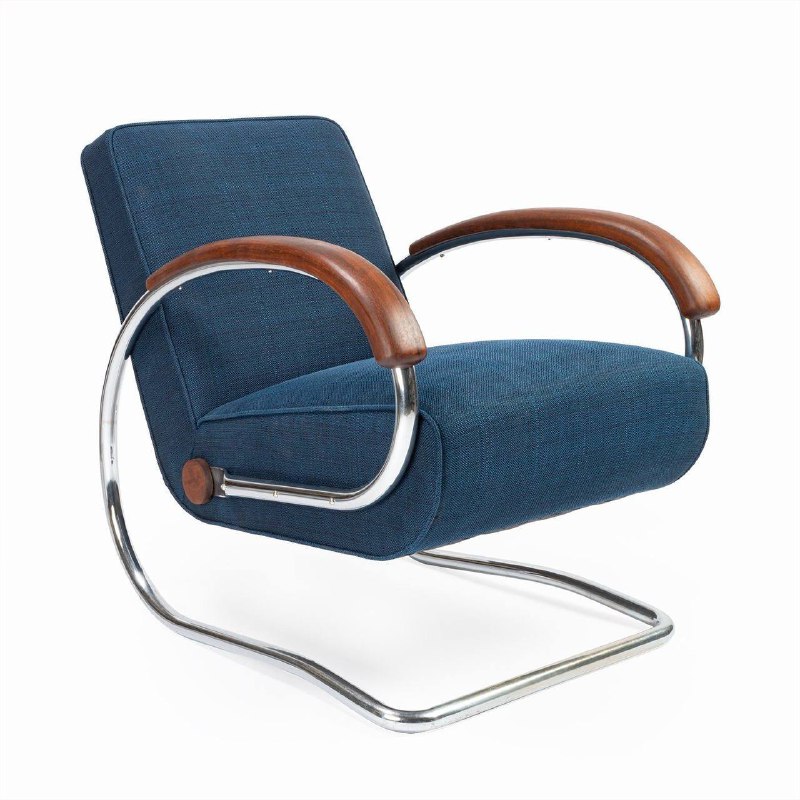
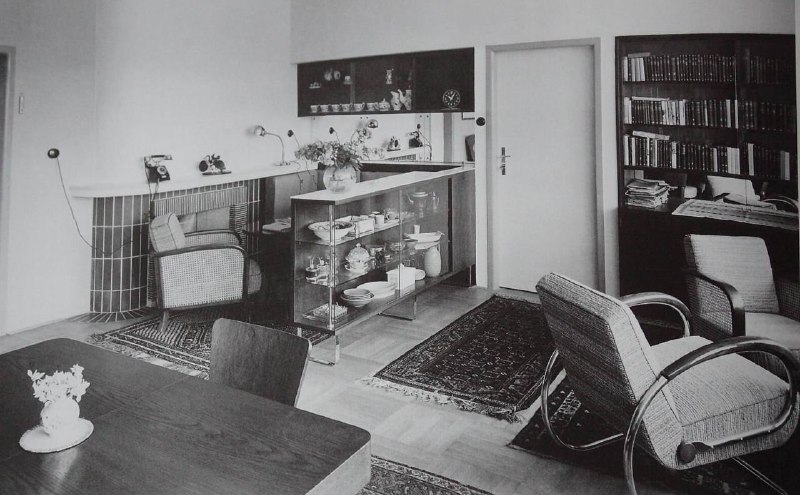
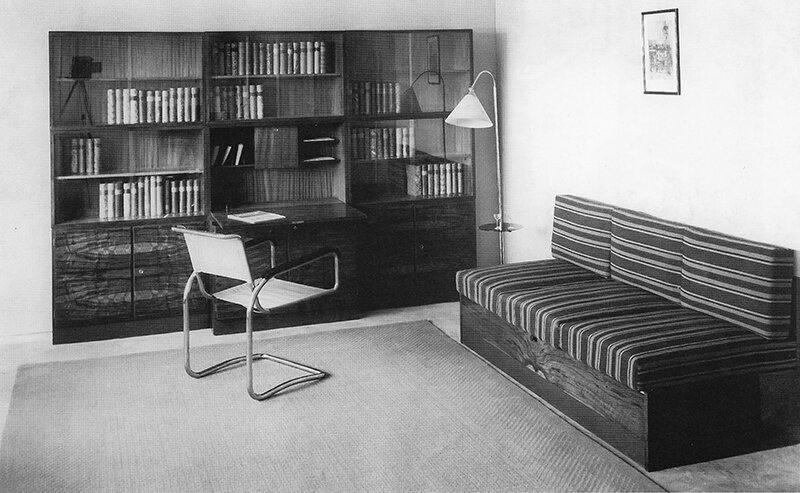
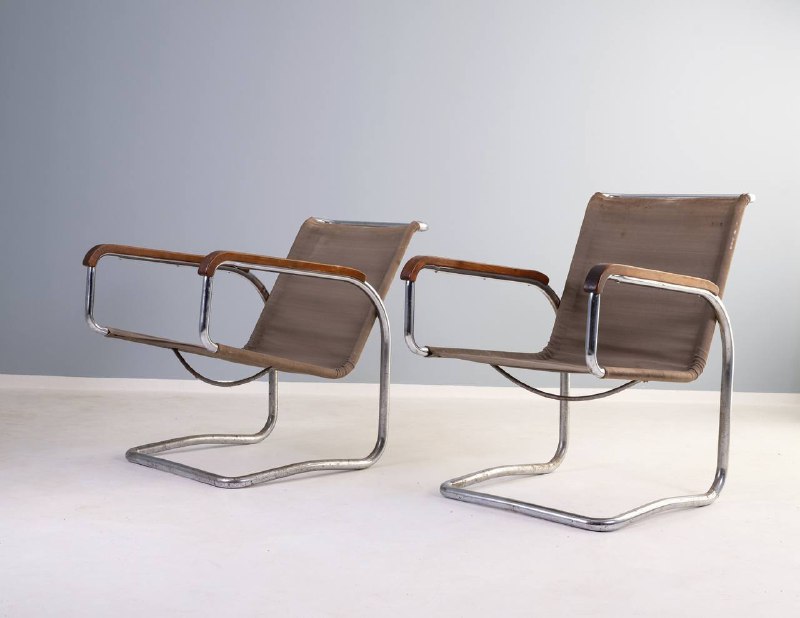
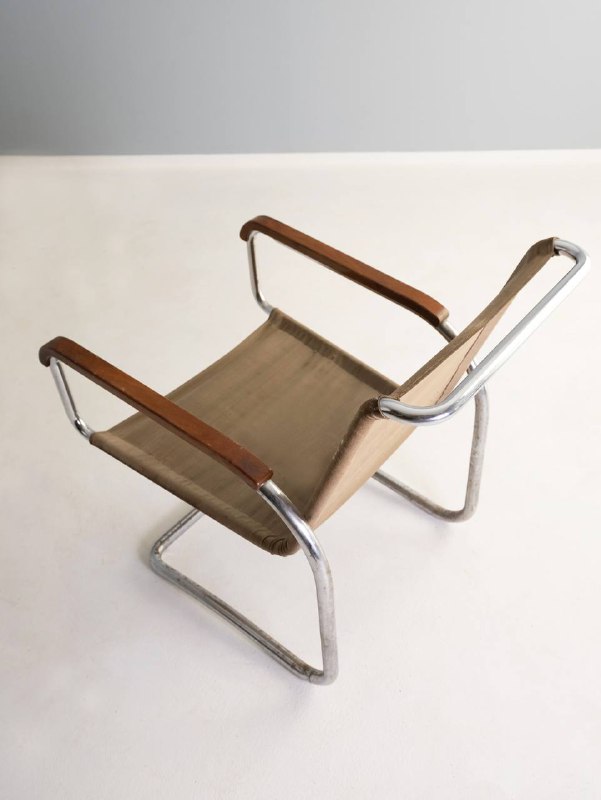
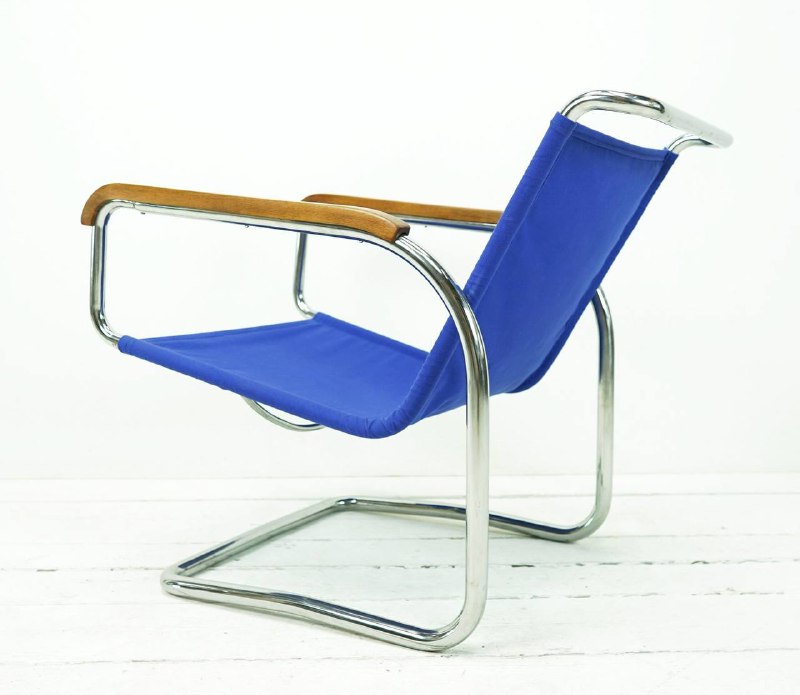




Share with your friend now:
group-telegram.com/midcenturymodern/17246
